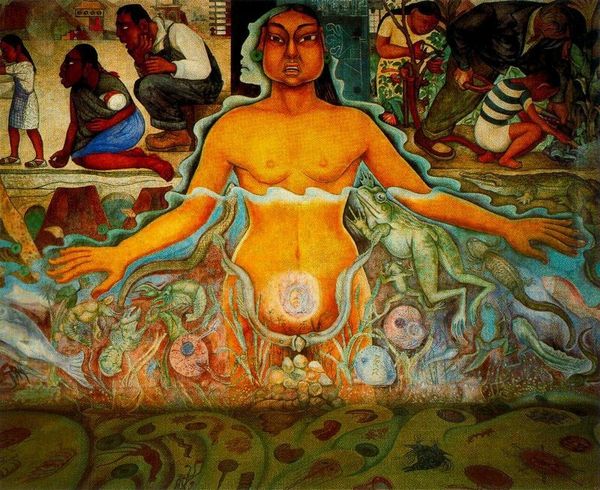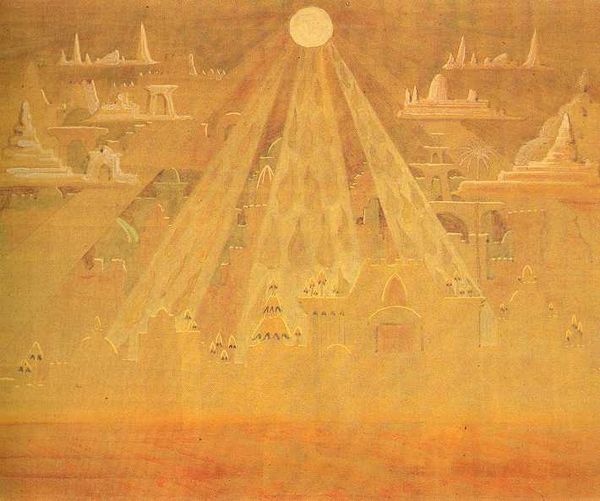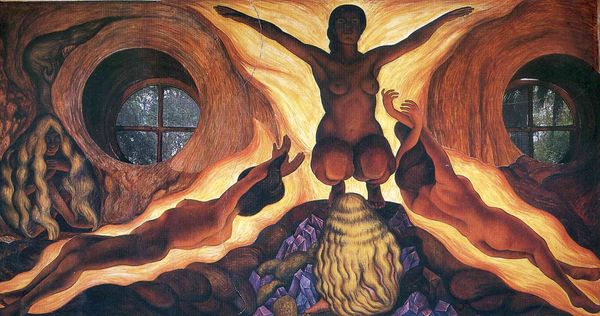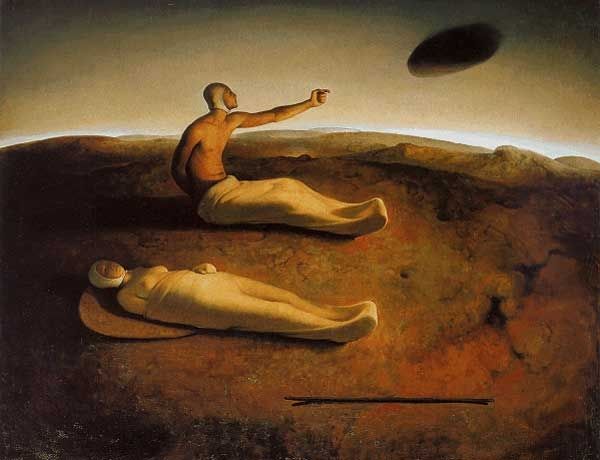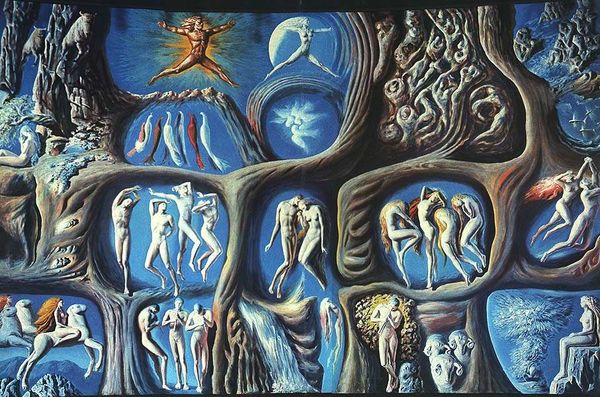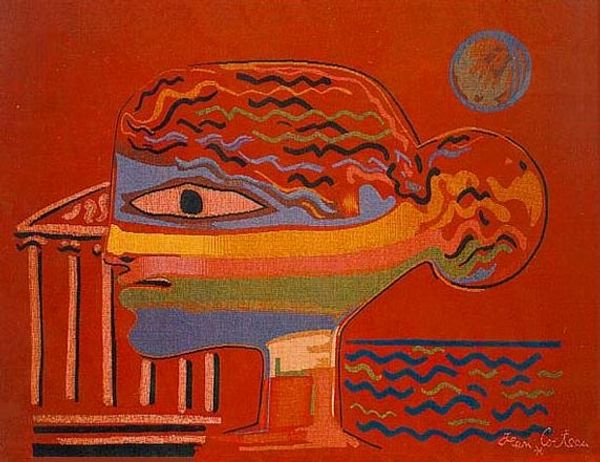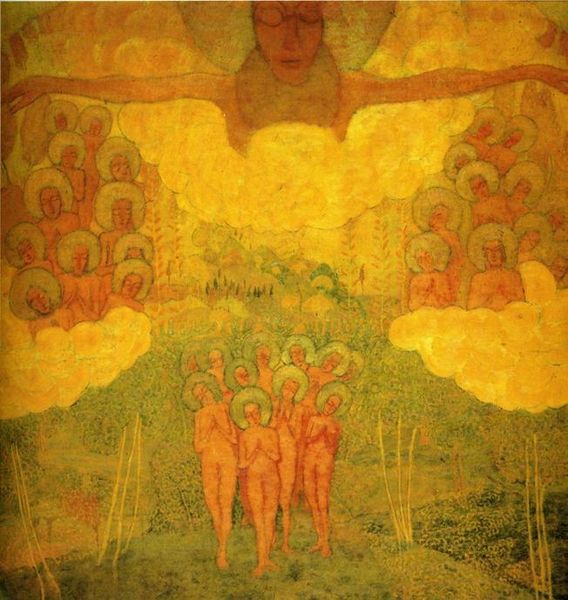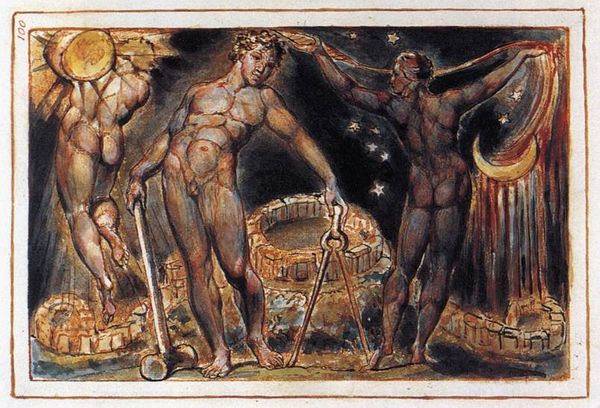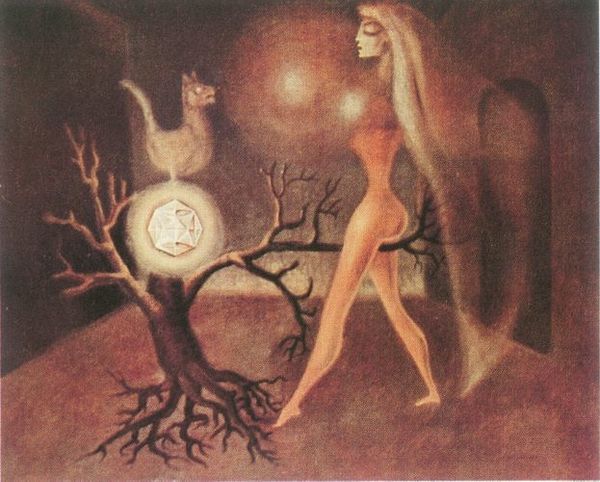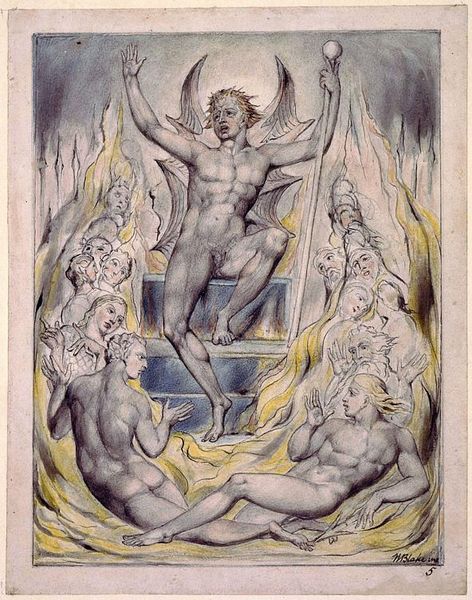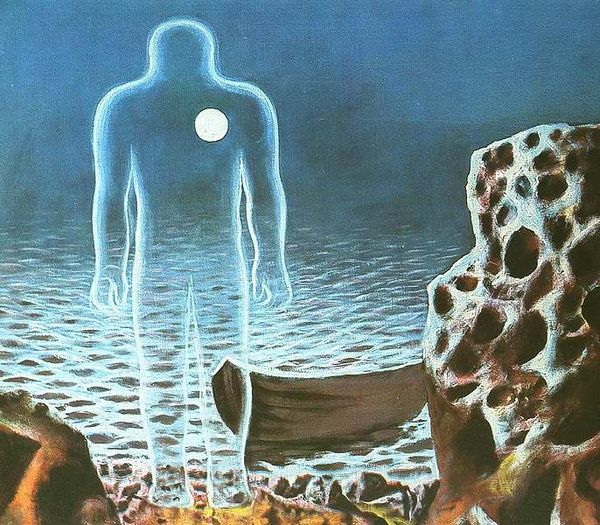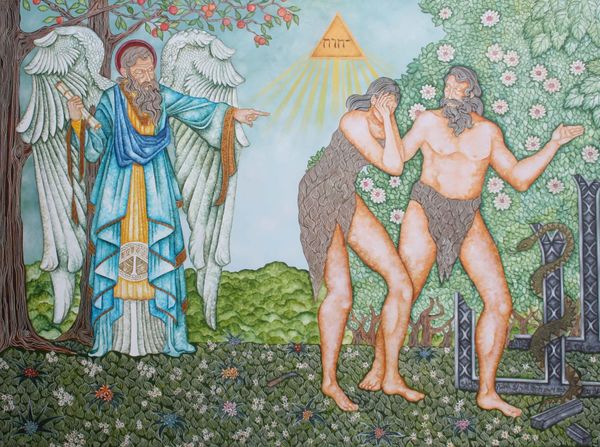
painting, fresco, mural
#
portrait
#
painting
#
figuration
#
fresco
#
oil painting
#
mexican-muralism
#
history-painting
#
nude
#
portrait art
#
mural
Copyright: Diego Rivera,Fair Use
Curator: Diego Rivera's "Maturation," a fresco dating to 1927, holds court here in the Chapingo Autonomous University. The earthy palette, the sheer scale – it's arresting. My first impression is of something ancient and cyclical. Editor: Arresting is a perfect descriptor. Rivera, a major figure in the Mexican muralist movement, fills the canvas with such compelling visual arrangements. I read a distinct echo of pre-Columbian fertility iconography – does it speak to you like that? Curator: Absolutely! The almost architectural form dominating the center is undeniably womb-like, and then there are the figures – each a stage perhaps? – around it. There's a palpable sense of potential and becoming. That window motif particularly resonates with ideas of looking inward, like spiritual progress. It draws heavily on a cultural wellspring. Editor: Agreed. Those nude figures exist beyond a solely decorative purpose. How would you define their positionality? They are rooted within Rivera’s political worldview, offering social commentary and an interpretation of his Mexican heritage. Each seems caught in a state of contemplation – gestures, and placements on this tableau all work together to create an embodied timeline, both physical and metaphorical. Curator: Their placement feels symbolic—they seem to signify distinct phases of human existence. Take the figure whose outstretched hands greet the viewer, like in supplication – this recalls a type of veneration toward women through pre-Columbian aesthetics and symbols that endure even today. Editor: And it’s not without nuance, Rivera lived within an incredibly transformative and contested era, in which the post-revolutionary landscape carried new political tensions and debates concerning indigenous and Mexican identity. He certainly captured an aspect of this with those poses— almost votive. And if this image is to serve as the ‘future of the country’, its foundation must incorporate labor and progress equally between genders, but this idea falls apart due to their explicit submissive and receptive presentation, which leads us to wonder what is his real intention of reflecting such perspective? Curator: That duality mirrors how cultural symbols always carry more than one meaning over long periods, so the original intention is not the only point worth discussing. We can focus on this aspect. Editor: Precisely, its beauty continues to prompt these essential reflections and questions regarding culture. Thank you. Curator: And to you.
Comments
No comments
Be the first to comment and join the conversation on the ultimate creative platform.

